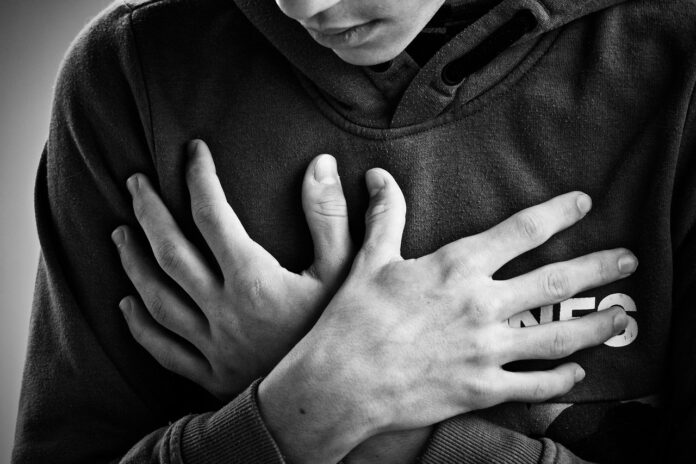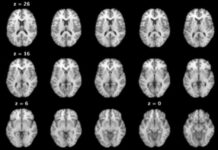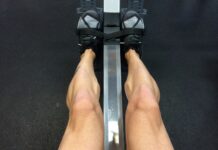Exercise is often touted as a key component of a healthy lifestyle, promising benefits ranging
from improved cardiovascular health to enhanced mental well-being. However, for some
individuals, the experience of working out can be marred by the sudden onset of symptoms resembling a panic attack. Understanding why this happens, how common it is and how to manage it can help alleviate the distress. Having worked as a personal trainer for over 12 years, I can attest that I have had many clients experience this sudden feeling. With proper management of the symptoms and understanding the reason it was happening, all of them have been able to go on and exercise and either be symptom-free or quickly adapt and overcome the panicky feelings.
When we exercise, our bodies undergo a series of physiological changes to meet the increased
demand for energy. One of the most notable changes is an increase in heart rate. As muscles
work harder, they require more oxygen and nutrients, which are delivered through the
bloodstream. The only way the heart can do this is by both increasing the pumping (higher heart
rate) and harder (increased blood pressure) to circulate blood more efficiently, ensuring that
working muscles receive the necessary supplies. Simultaneously, the breathing rate increases to facilitate greater oxygen intake and carbon dioxide expulsion.
Here is the clincher — the sympathetic nervous system, which is responsible for the body’s fight-or-flight response, also becomes activated. This system also causes the release of adrenaline, which heightens alertness and prepares the body for physical exertion. It’s an involuntary response to help protect us, but it can also feel very overwhelming. But don’t worry; it’s manageable.
For some individuals, the physiological changes that accompany exercise can mimic the
symptoms of a panic attack. Rapid heartbeat, shortness of breath and increased adrenaline levels are common in both scenarios. This overlap can create a confusing and distressing experience, especially for those who are prone to anxiety or have a history of panic attacks.
The brain, interpreting these physiological signals, may mistakenly perceive them as indicators
of imminent danger, triggering a full-blown panic response. This misinterpretation is often
exacerbated by hyperventilation (over-breathing), which can lead to dizziness, lightheadedness
and a sense of losing control — all hallmark symptoms of a panic attack.
While there’s no precise statistic on the prevalence of panic attacks during exercise, it’s known to be relatively common, especially among individuals with anxiety disorders. A study published in the Journal of Anxiety Disorders found that individuals with panic disorder are more likely to
experience panic attacks during physical activity. Even those without a diagnosed anxiety
disorder can occasionally experience these symptoms, particularly if they are new to exercise or
pushing their physical limits.
If you find yourself experiencing panic symptoms during exercise, there are several strategies
you can use to manage and alleviate the discomfort:
- If you start feeling panicky, reduce the intensity of your workout. Slowing down your pace can help lower your heart rate and decrease the intensity of symptoms.
- Practice deep, slow breathing to counteract hyperventilation. Inhale deeply through your nose, hold for a few seconds, and exhale slowly through your mouth. This can help stabilize your breathing and reduce dizziness.
- Dehydration can exacerbate feelings of panic and discomfort. Ensure you drink enough water before, during and after exercise.
- If you’re new to exercise, start with low-intensity workouts and gradually increase the intensity as your fitness level improves. This can help your body acclimate to the physiological changes that occur during exercise.
- Techniques such as mindfulness meditation and positive visualization can help reduce anxiety. Focusing on the present moment and visualizing a calm, safe place can distract your mind from panic-inducing thoughts.
- Exercise in a setting where you feel comfortable and safe. Avoid overcrowded or overly stimulating environments, which can increase anxiety.
- If exercise-induced panic attacks are frequent or severe, consider seeking advice from a healthcare professional. They can help identify underlying issues and suggest appropriate treatments.
By recognizing the overlap between physiological responses to exercise and panic symptoms, individuals can take steps to manage their anxiety and continue to enjoy the myriad benefits of physical activity. And remember, you are not alone with this experience; there is nothing wrong with you. If you need more help, please reach out to me, I would love to help you have a more positive exercise experience.


























